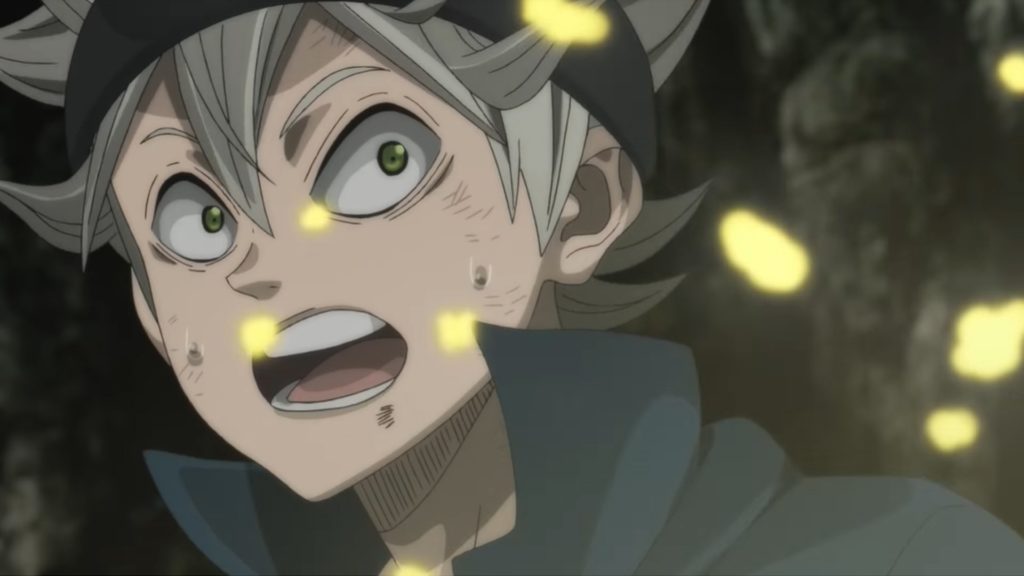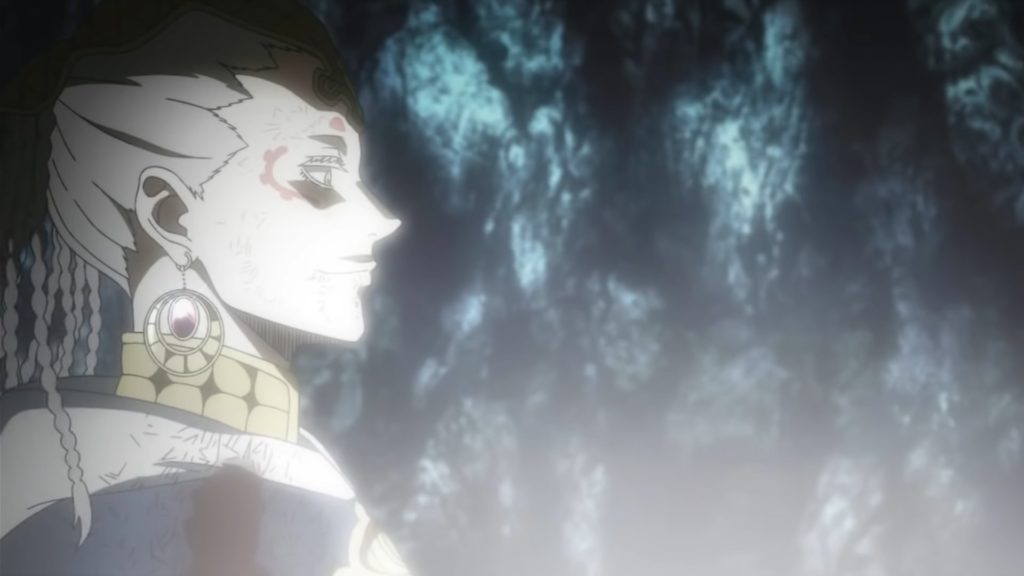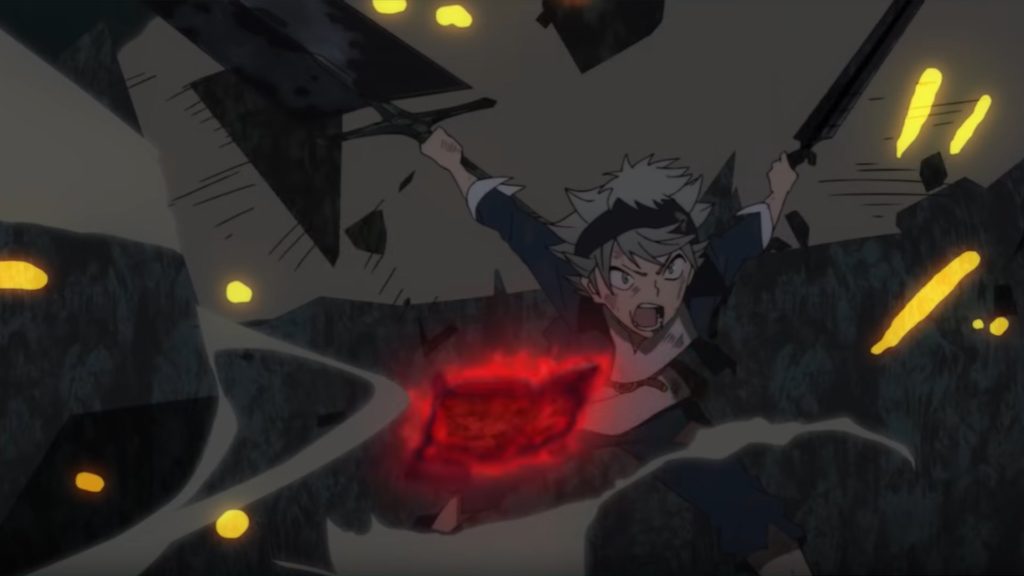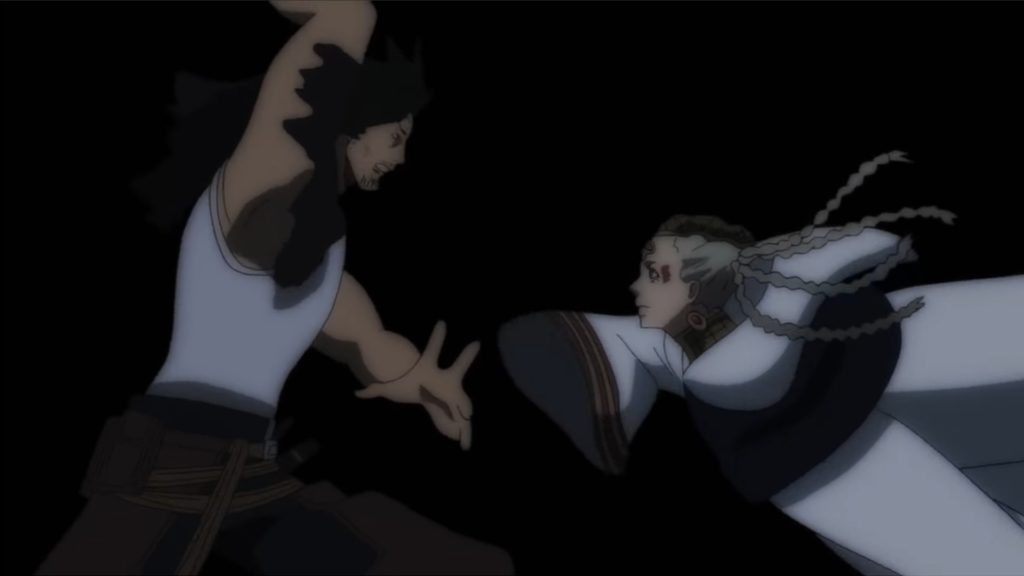Black Clover Season 1 Part 4 Review
Going into the penultimate volume of the first series of Black Clover with Part 4 (Episodes 30-39), I was expecting these episodes to go one of two ways. Either it was going to start raising the stakes as it inevitably builds towards a predicted final battle as any shonen series typically would. Or, in complete contrast, it would be a primarily sombre set of episodes before the next part focuses on the main conflict of the season. I’m happy to say this release generally centres on the main story and the progression of Asta and Yuno’s journeys to become the wizard king, while trying to stop their mysterious enemy, the Eye of the Midnight Sun. So… more magic-infused adventures with Asta and his dysfunctional group of friends to look forward to in this release.

After their first major battle with the Eye of the Midnight Sun, Asta and Yuno are rewarded with new ranks, Asta being awarded the rank of Junior Magic Knight Third Class, while Yuno is promoted to First Class. I have criticized these releases in the past for their small episode count per volume, however, they seem to stop at logical points regarding the story and you do get a few smaller arcs spread across these episodes. This is particularly good with Part 4, as we start with a smaller arc focused on character development that then progresses into the main overarching conflict of the season.
Asta visits Rebecca’s Scarlet, whom he met in the last few episodes, at her village and by coincidence runs into Gauche Adlai, a fellow Black Bulls member with an unhealthy obsession with his 10-year-old sister. A very unhealthy obsession. His story treatment in this arc mirrors that of Luck in the dungeon arc, as we are treated to a series of flashbacks and interactions that show us why he is so unhinged. I’ve really appreciated the way the series has focussed on its supporting cast like this, and while it can derail the action at times, it’s good that it takes the time to inform us of the circumstances that led to these characters behaving as they do, even if it often doesn’t excuse their behaviour.

We get further glimpses into the motivations and abilities of the series’ main antagonists, the Eye of the Midnight Sun, and their mysterious leader, Licht. Their group is continuing to be built up as the main threat to the Clover Kingdom as we are introduced to more of their powerful roster such as their strongest members, The Third Eye, as well as the extent of Licht’s magical abilities with his first major battle in the series. Early portions of the series have tended to focus on shorter conflicts with several one-and-done enemies, so it is a welcome change to have a clear opposition and some build-up of larger stakes in the expected shonen battles. Particularly when some more improved strategies, abilities and even animation are on show as the series’ more powerful magic users step up to have a crack at one another.
We also have the combative debut of Black Bulls leader, Yami Sukehiro. Yami has been a featured character in the series as an authority figure to Asta but we had yet to see him in action and now that we have, it is explosive to say the least. He may embody your typical no nonsense, disgruntled, cool shonen trope but by the same token these characters tend to have the more flashy and direct combat abilities and Yami is no different. His sword slash-focussed attacks make for some great fight sequences, particularly in the visual department, which the series has lacked over the last couple of arcs.

Though many characters in the show’s large cast have developed well, not all have provoked a positive response. Noelle was a stand-out in the beginning for me, due to her struggles with controlling her magical abilities and being an outsider among the noble Silva family. Initially conveying her as a cold character, the series justified her behaviour while also making her sympathetic, creating a great contrast to characters such as Asta, who is brash and shouts his intentions for all to hear. However, at this point in the series, her entire character is fixated on her crush on Asta, while her main narrative seems to have taken a back seat. Hopefully going into Part 5 this can be remedied, but for now it has been a little disappointing.
I was particularly critical of the animation in Part 3. It appeared as if the usual problem of producing weekly ongoing anime had reared its head as Black Clover’s producers, one that Studio Pierrot, are probably already very familiar with, having previously produced series such as Naruto and Bleach, where the animation quality drops significantly at certain points. During the main battle of this part, we get glimpses of the potential these larger-than-life confrontations can have. While not fully realised for long portions of these showdowns, I’m grateful that we are beginning to see some of the fluid animation that we know this studio is capable of. Hopefully in Part 5, with the conclusion of Season 1, we can see the studio truly flex some of their animation skills with what will most likely be a major closing battle to the series.

The opening and closing sequences for this part remain the same as in the previous release, being “Black Rover” by Vickeblanka, and “Black to The Dreamlight” by EMPiRE. If you want to read my opinions on these (with “Black Rover” being a particular favourite) then please feel free to look at my review of Part 3.
As for the extras, these sets, while being smaller in terms of episode count, continue to have a large number of features, including: Episode 33 and 37 commentaries (English voice-over cast), Inside Studio J: New City, Clover Clips Special Edition, Textless opening and closing songs for “Black Rover” and “Black to the Dreamlight”, and Inside the Episode Black Clover Highlights of all the included episodes, which are discussions with the English voice cast.

Black Clover continues to develop its large cast of characters and build towards its overarching conflict as we get one step closer to the finale of its first season. Its pacing through these releases has been great, although it continues to struggle to really separate itself from the tropes of many other ongoing shonen anime. It has shown flashes of promise in its presentation and with the series being an ongoing, long-form format there is plenty of time to develop. With the series conclusion coming in the next release, hopefully it can finish the season with a flourish.


